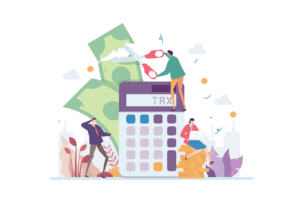What Is An Adjusted Trial Balance And How Do You Prepare One?
Content

The adjusted trial balance fixes this by applying the adjusting entries to the appropriate accounts. Adjusting entries are prepared to correct and update the initial version of the trial balance which is the unadjusted trial balance. Just like an unadjusted trial balance, an adjusted trial balance is an organized listing of the accounts you’ll find in a general ledger. And even if you’re not the one in charge of the preparation of your business’s financial statements, it’s still worthwhile to read this article. An adjusted trial balance is prepared using the same format as that of an unadjusted trial balance.
Searching for and fixing these errors is called making correcting entries. Here we’ll go over what exactly this miraculous document is, how to create one, and why it’s such an important part of accounting.
Popular Differences
They also make adjustments to the trial balance to make sure that it includes information for only one accounting cycle. Companies that use manual accounting use this method to balance their transactions from account to account. The adjusting entries are shown in a separate column, but in aggregate for each account; thus, it may be difficult to discern which specific journal entries impact each account. To create an adjusted trial balance, start with the unadjusted trial balance. If your credit and debit columns are not equal, you’ll have to identify the error within your general ledger. This means that some transactions were not recorded accurately twice.
Adjusted trial balance is not a part of financial statements rather it is a statement or source document for internal use. It is mostly helpful in situations where financial statements are manually prepared. If the organization is using some kind of accounting software, the bookkeeper/accountant just need to pass the journal entries . The software automatically updates/adjusts the relevant ledger accounts and generates financial statements for the use of various stakeholders. The preparation of statement of cash flows, however, requires a lot of additional information.
What Is Adjusted Trial Balance?
This balance carries across to the work sheet’s balance sheet columns. Adjusted trial balance almost the same as unadjusted trial balance. Sometimes, these two reports are prepared by combine into one report by showing unadjusted and adjusted balance. Before drafting or preparing the financial statements, it is good to have an overall review of the trial balance. This is to make sure that the numbers of items are consistent with our understanding. 1.Adjusted trial balance is used after all the adjustments have been made to the journal while an unadjusted trial balance is used when the entries are not yet considered final in a certain period.
Ledger AccountsLedger in accounting records and processes a firm’s financial data, taken from journal entries. This becomes an important financial record for future reference. $4,000Total$14,000$14,000In this unadjusted trial balance, the accountant entered each transaction twice, so the totals balance.
Is a list of all accounts in the general ledger, including adjusting entries, which have nonzero balances. This trial balance is an important step in the accounting process because it helps identify any computational errors throughout the first five steps in the cycle. The second method is simple and fast but less systematic and is usually used by small companies where only a few adjusting entries are found at the end of accounting period.
- He makes an adjustment to the interest payable account by crediting the account $150.
- Lastly, any accounts that affect the cash flow will be used in the preparation of cash flow statements.
- If the totals of the two columns do not match each other, it means that there is an error.
- Missing transactions are transactions you didn’t record at the time you made them.
Once all ledger accounts and their balances are recorded, the debit and credit columns on the adjusted trial balance are totaled to see if the figures in each column match. The final total in the debit column must be the same dollar amount that is determined in the final credit column. Since journal entries are made using double entry bookkeeping process, thus totals of the debit and credit columns must match with each other. If the totals of the two columns do not match with each other it means that there is some error in making of journal entries or their posting in to general ledger. In a dual entry accounting system, entries are made in debit and credit columns. Increases in assets — the things you own — and expenses are entered in the debit column, while liabilities — or things you owe — and revenues are entered in the credit column.
Difference Between A Broker And An Advisor With Table
Unadjusted Trial balance is only used to check calculation accuracy. Whereas, Adjusted Trial balance can be used to check both the accounting and calculation accuracy. Stay updated on the latest products and services anytime, anywhere. In such a case, since the resources of the business were not used, the bookkeeper may miss the transaction.
Secondly, you can use the unadjusted trial balance and can only add the adjusting entries to the accounts that are affected by the adjustments. This method is simple and easy to implement, however, only small businesses with few adjusting entries can use this method.

Once the unadjusted trial balance accounts have been reviewed and the proper adjusting entries prepared, the adjusting entries are posted to the general ledger. To verify that debits equal credits in the general ledger after the entries are posted, another trial balance is prepared. The December 31 adjusted trial balance for the Guitar Lessons Corporation is shown below. Before any adjusting entries are made, accountants will prepare a multiple column worksheet.
What Software Is Available To Create An Adjusted Trial Balance?
Such uniformity guarantees there are no unequal debits and credits that have been incorrectly entered during the double-entry recording process. However, a trial balance cannot detect bookkeeping errors that are not simple mathematical mistakes. The first two columns of the worksheet contain information from the trial balance.
Since the company produces quarterly financial statements, the time accounted for in each accounting period is 3 months. Jim knows that of the 6 month’s prepaid rent, the company has used up 3 months, or half, of the prepayment. One of those steps involves something called an https://www.bookstime.com/. The adjusted trial balance is a report that lists all the accounts of a company and their balances after adjustments have been made. I know, the concept can be a little confusing, so let’s dive a little deeper into it and figure it all out. An adjusted trial balance is prepared after adjusting entries are made and posted to the ledger.
What Happens After The Adjusted Trial Balance Is Calculated?
In this system, every transaction involves two accounts, and debits always have to equal credits. Account debit credit Supplies expense $18,480 Supplies $18480 This entry will show up in the adjustments column of the worksheet.
To prepare an adjusted trial balance, we must establish first if we’re going to use the general ledger or unadjusted trial balance as the base. A trial balance, particularly the adjusted trial balance, has all the information that can be found in financial statements. Adjusted trial balances are not financial statements and as such, are not suitable for external use. Some businesses cannot afford automated accounting systems, and thus, they still manually prepare their financial statements. Since unbalanced postings are not allowed, you can be sure that debit and credit balances will be equal. That moniker goes to the balance sheet, income statement, and cash flow statement.

Totals$100,000$99,000Take a look at the two totals at the bottom. They don’t match up, so that means we’ve got some checking to do. We start by reviewing each individual entry for each account—for example, we look at each entry listed as “cash”, each entry listed as “inventory”, and so on.
Our priority at The Blueprint is helping businesses find the best solutions to improve their bottom lines and make owners smarter, happier, and richer. That’s why our editorial opinions and reviews are ours alone and aren’t inspired, endorsed, or sponsored by an advertiser. Editorial content from The Blueprint is separate from The Motley Fool editorial content and is created by a different analyst team. Sage 50cloudaccounting offers a comprehensive company overview dashboard. As an added bonus, QuickBooks Premier and Enterprise also include industry-specific features designed for nonprofits, manufacturing, or retail businesses. AccountEdge Pro pricing varies, depending on whether you choose the on-premise application or opt for cloud connectivity. AccountEdge Pro’s on-site application charges a one-time fee of $399, while the cloud application, Priority Zoom, starts at $50/month for up to 5 users, with additional licenses $50/month.
While Adjusted Trial balance possesses column format, but extra columns are also added for end-time entries. 3.An adjusted trial balance shows an additional account regarding the net/loss of income. Lastly, any accounts that affect the cash flow will be used in the preparation of cash flow statements. The adjusted trial balance captures the necessary adjustment such as accruals, deferral, depreciation, amortization, etc. Take note though that the adjusted trial balance is not a financial statement.
This worksheet allows the person preparing journal entries to pencil in the needed adjustments and make sure that the total of all debit and credit balances still add up after adjustments have been made. This is the second trial balance prepared in the accounting cycle. Its purpose is to test the equality between debits and credits after adjusting entries are made, i.e., after account balances have been updated. $2,000Total$16,000$16,000This adjusted trial balance shows an accurate representation of the transactions for each account and how they balance. From this balance sheet, the accountant can determine what expenses their company paid out during the period and how much cash it earned. The accountant can also determine how many assets the company accrued during the period, which adds value to the company.
How To Cut The Cost On Your Financial Transactions
You need to adjust accounting entries to prepare financial statements. And, you need financial statements to make decisions about your business, secure funding, and more. The adjusted trial balance is the statement that listed down all the closed account ledgers after making the adjustments. This is the final trial balance that use to prepare the financial statements.
Overview: What Is An Adjusted Trial Balance In Accounting?
Lastly, the adjusted trial balance shows the net or loss of income as part of an additional account. The unadjusted kind will simply enter all the necessary figures. For this article, we will assume that an unadjusted trial balance has already been prepared, which we will use as the base for our adjusted trial balance. They are typically prepared after a trial balance, particularly an unadjusted trial balance has been prepared. If the entries made are incorrect, then it’ll follow that financial statements will be inaccurate.
It’s hard to understand exactly what a trial balance is without understanding double-entry accounting jargon like “debits” and “credits,” so let’s go over that next. You can ensure that the entries have posted correctly by comparing the initial trial balance totals with the Adjusted Trial Balance totals.
When you have entered all the information into your trial balance, you need to find the total for debits by adding up all the amounts in the debit column. The balance sheet is one of the three fundamental financial statements. The financial statements are key to both financial modeling and accounting. The primary job of a bookkeeper is to maintain and record the daily financial events of the company. A Bookkeeper is responsible for recording and maintaining a business’ financial transactions, such as purchases, expenses, sales revenue, invoices, and payments.
After incorporating the adjustments above, the adjusted trial balance would look like this. Accrued RevenueAccrued revenues are the company’s revenue in the normal course of business after selling the goods or providing services to a third party. Instead, it is shown as an asset in the balance sheet of the company.
Close all income statement accounts with debit balances to the income summary account. The entry shown below assumes the inventory account was updated with adjusting entries and, therefore, does not include it.